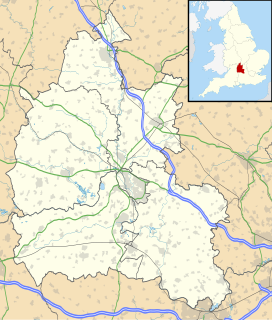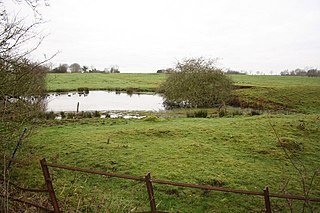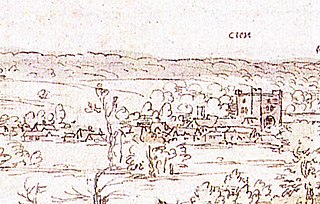Related Research Articles

Mount Grace Priory, in the parish of East Harlsey, North Yorkshire, England, Set in woodlands within the North York Moors National Park, is represented today by the best preserved and most accessible ruins among the nine houses of the Carthusian Order which existed in England in the Middle Ages and which were known as charterhouses.

Cogges is an area beside the River Windrush in Witney, Oxfordshire, 0.5 miles (800 m) east of the town centre. It had been a separate village and until 1932 it was a separate civil parish.
Axholme Charterhouse or Axholme Priory, also Melwood Priory or Low Melwood Priory, North Lincolnshire, is one of the ten medieval Carthusian houses (charterhouses) in England. It was established in 1397/1398 by Thomas Mowbray, Earl of Nottingham and later Duke of Norfolk. The house was centred on a pre-existing chapel on the present Low Melwood Farm, between Owston Ferry and Epworth in the Isle of Axholme, which according to a papal bull of 1398 "was called anciently the Priory of the Wood".

Hinton Priory was a Carthusian monastery in northeast Somerset, England, from 1232 until 1539.

Carisbrooke Priory was an alien priory, a dependency of Lyre Abbey in Normandy. The priory was situated on rising ground on the outskirts of Carisbrooke close to Newport on the Isle of Wight.
Grovebury Priory, also known as La Grave or Grava was a priory in Leighton Buzzard, Bedfordshire, England. It was established in 1164 and disestablished in 1414.
Ellingham Priory was a medieval monastic house in Ellingham, Hampshire, England. It was founded by William de Soleres in 1160. It was a cell to the Abbey of Saint-Sauveur-le-Vicomte in Normandy. The church of Ellingham formed part of the grant of William de Solers to Ellingham Priory.
Haugham Priory was a Benedictine priory in Lincolnshire, England.

Minting Priory was a priory in Minting, Lincolnshire, England.
Everdon Priory was a priory in Northamptonshire, England. The village of Everdon is located about 6 km south-east of the town of Daventry.

Ellerton Priory was a priory of Cistercian nuns in Swaledale in North Yorkshire, England. Its ruins lie in the civil parish of Ellerton Abbey.
Yenston Priory was a Benedictine priory in Henstridge, Somerset, England.

Monks Kirby Priory was a priory, at first Benedictine and later Carthusian, in Monks Kirby, Warwickshire, England.

Sheen Priory in Sheen, now Richmond, London, was a Carthusian monastery founded in 1414 within the royal manor of Sheen, on the south bank of the Thames, upstream and approximately 9 miles southwest of the Palace of Westminster. It was built on a site approximately half a mile to the north of Sheen Palace, which itself also occupied a riverside site, that today lies between Richmond Green and the River Thames.

The Charterhouse was a Carthusian monastery and almshouse in Kingston upon Hull, England, built just outside the town's walls. The hospital building survived the Dissolution of the Monasteries; the priory was destroyed in 1538. The structure of the hospital was destroyed before the first siege of Hull during the English Civil War. A replacement was built in 1645, which was replaced again in 1780; the buildings function as an almshouse with an attached chapel, and remain in use to the present day (2012).
References
- ↑ Clarkson, Christopher (1814). The history of Richmond, in the county of York : including a description of the castle, friary, Easeby-Abbey and other remains of antiquity in the neighbourhood. Richmond: Bowman. p. 137. OCLC 313153608.
- ↑ Paige, William (1913). The Victoria history of the counties of England. The Victoria history of the county of York, Volume 3. London: Constable. p. 391. OCLC 504890096.
Coordinates: 54°25′46″N1°38′14″W / 54.4295°N 1.6371°W
| | This article about a North Yorkshire building or structure is a stub. You can help Wikipedia by expanding it. |
| | This article about a British Christian monastery, abbey, priory or other religious house is a stub. You can help Wikipedia by expanding it. |